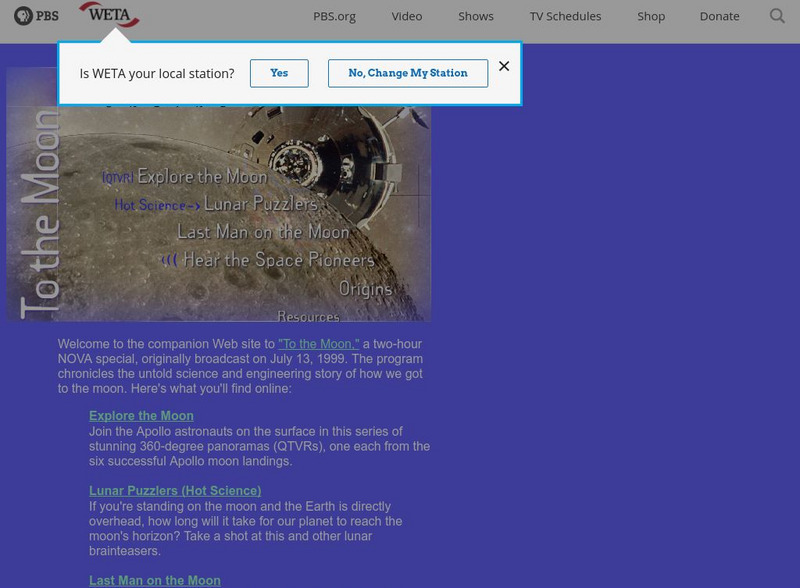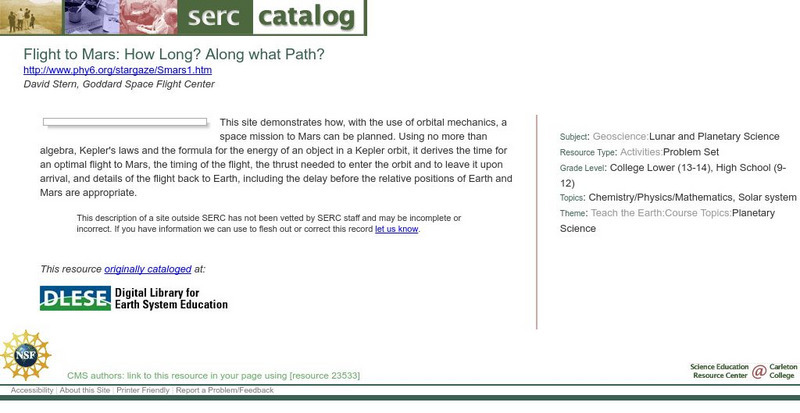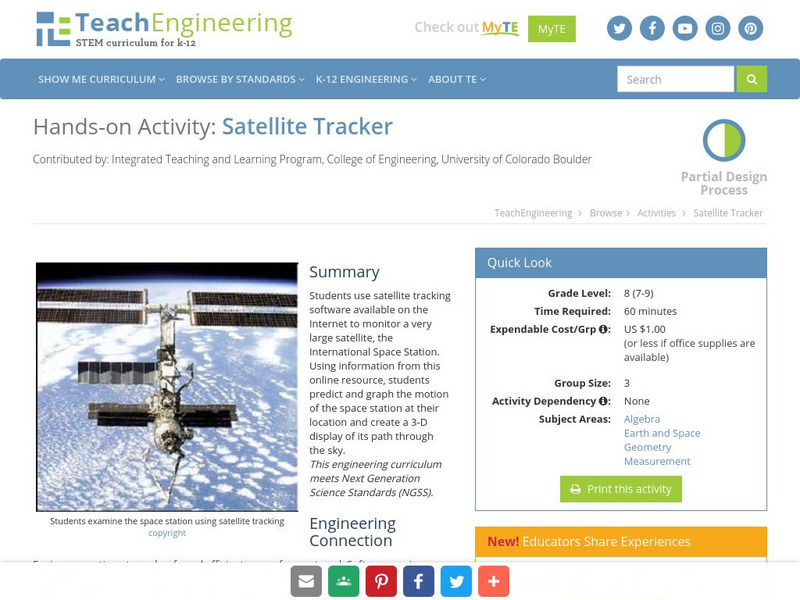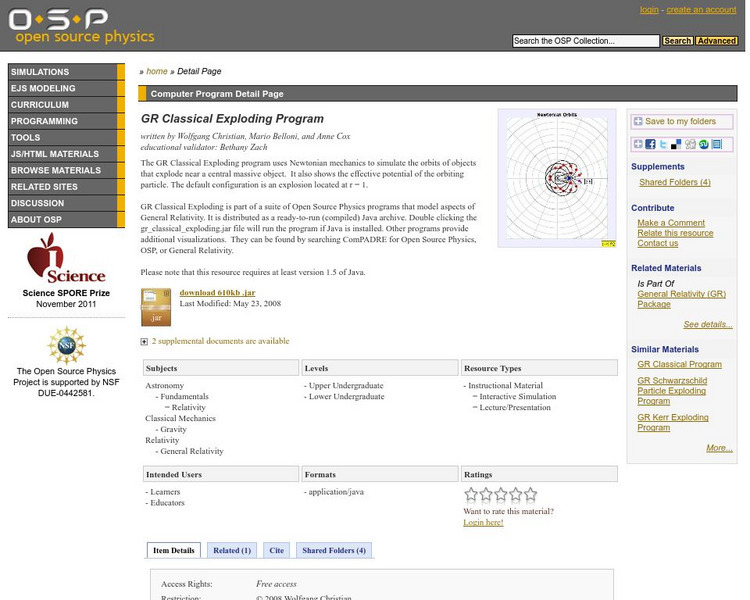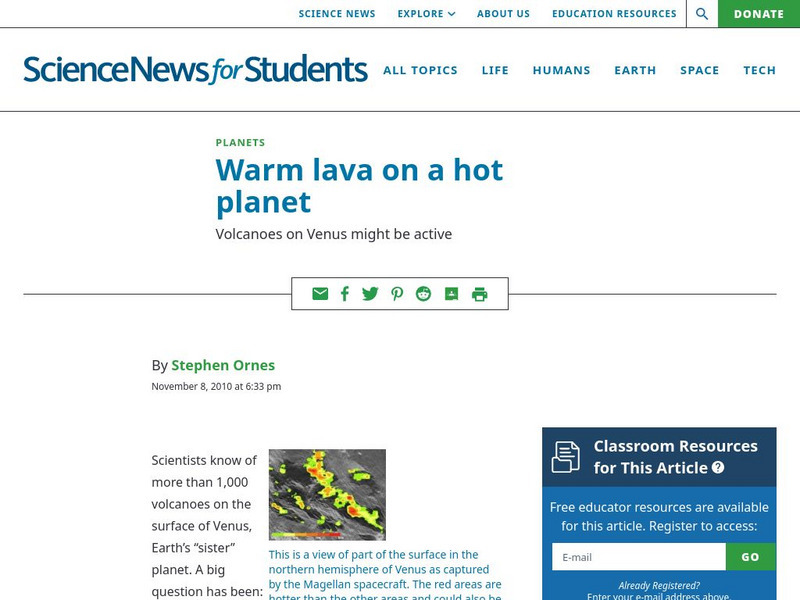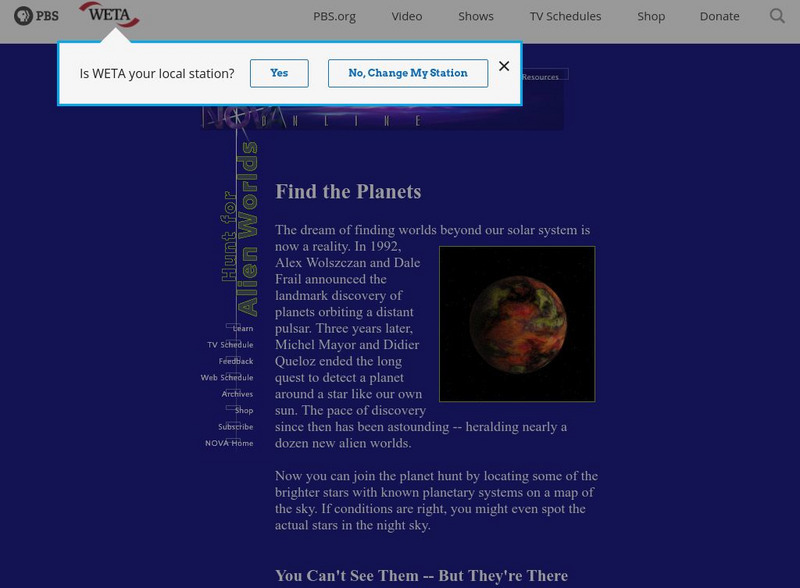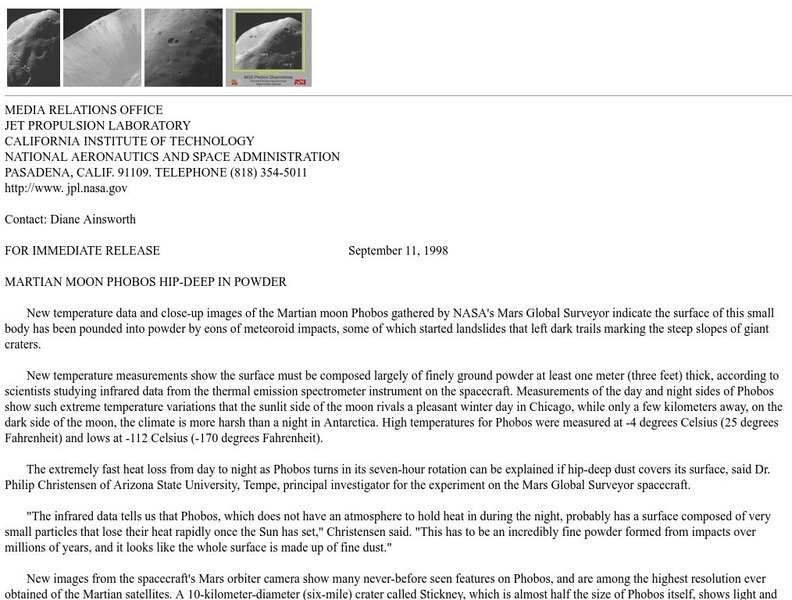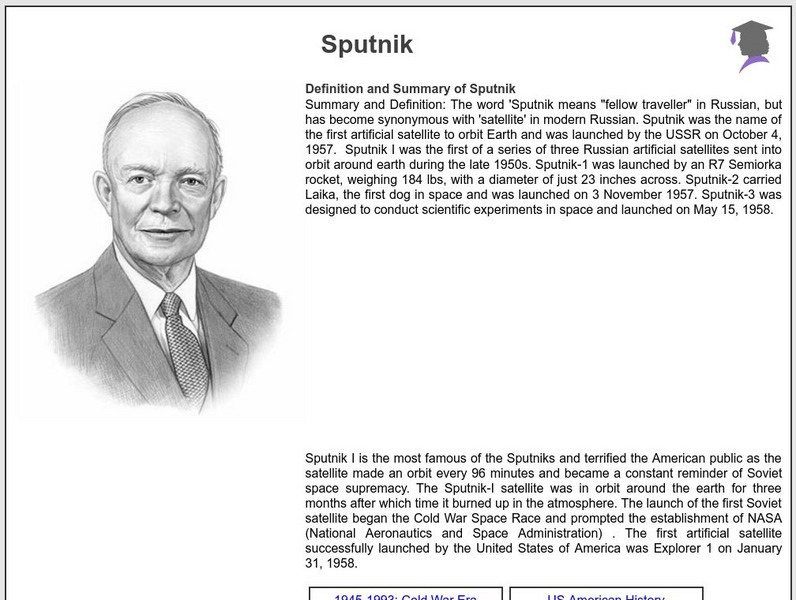Hi, what do you want to do?
PBS
Nova: To the Moon
This companion website of a NOVA program that aired in 1999 features extensive information that focuses on moon research and includes a history of the Apollo missions as well as the science of the moon's origins.
Science Education Resource Center at Carleton College
Serc: Flight to Mars: How Long? Along What Path?
Demonstrate how, with the use of orbital mechanics, a space mission to Mars can be planned. Using no more than algebra, Kepler's laws and the formula for the energy of an object in a Kepler orbit, the exercise derives the time for an...
TeachEngineering
Teach Engineering: Satellite Tracker
Students use satellite tracking software available on the Internet to monitor a very large satellite, the International Space Station. Using information from this online resource, students predict and graph the motion of the space...
TeachEngineering
Teach Engineering: Get Me Off This Planet
The purpose of this lesson is to teach students about how a spacecraft gets from the surface of the Earth to Mars. The lesson first investigates rockets and how they are able to get us into space. Finally, the nature of an orbit is...
American Association of Physics Teachers
Com Padre Digital Library: Open Source Physics: Gr Classical Exploding Program
Simulation of the orbital dynamics of objects exploding near a large body in space.
Concord Consortium
Concord Consortium: Stem Resources: Launching a Satellite
Do you think you could fire an "unpowered" object into orbit? By controlling the angle and speed at which the satellite is launch, students will try to launch a satellite into space with this computer model. Activity includes questions...
A&E Television
History.com: Challenger Explosion: How Groupthink and Other Causes Led to the Tragedy
Seven lives were lost as communications failed in the face of public pressure to proceed with the launch despite dangerously cold conditions. January 28, 1986, The sun had been up for less than an hour and air temperatures were a few...
Society for Science and the Public
Science News for Students: Warm Lava on a Hot Planet
Describes scientific research into volcanic activity on the surface of Venus. Using information transmitted from the orbiting Magellan spacecraft, data is collected. Includes a glossary of vocabulary terms. [ November 8, 2010]
NASA
Nasa: Visible Earth: 3 D Data From Ice Sat
3-D Data from ICESat: Orbiting the Earth at nearly 17,000 miles per hour, NASA's Ice, Cloud and land Elevation Satellite (ICESat) is collecting spectacular new three-dimensional measurements of the Earth's surface and atmosphere.
PBS
Pbs: Find the Planets
Find out how astronomers locate new planets by observing the traits of the stars they orbit. Get some tips at locating stars with the help of star maps.
The Tech Interactive
Tech Museum: The Satellite Site!
An engaging look at satellites! What they are, what they do, and how they orbit. One interactive activity is building three different types of satellites.
Read Works
Read Works: Cold Faithful
[Free Registration/Login Required] A literary text about ice geysers on Enceladus, one of the moons orbiting Saturn. A question sheet is available to help students build skills in reading comprehension.
NASA
Nasa: Magellan Mission to Venus
This home page from NASA offers Venus images taken by Magellan and other highlights from the mission. In orbit around Venus for four years this mission provided maps of 98 percent of the surface of Venus that are more detailed than most...
NASA
Nasa: Martian Moon Phobos Hip Deep in Powder
This press release from NASA, based on data from the Mars Global Survey/Mars Orbiter Camera describes Mars' moon Phobos. Included are small thumbanil images that link to more detailed GIF files.
CK-12 Foundation
Ck 12: Physics: Gravitation Study Guide
This study guide on gravitation covers some key vocabulary, Kepler's Laws of Planetary Motion, and orbiting bodies or satellites. Includes important equations. It is available for download with free registration.
Physics Classroom
The Physics Classroom: Momentum and Collisions: The Astronaut Catch
Students imagine that they are hovering next to the space shuttle in earth-orbit, and bump into another astronaut of equal mass. If the two astronauts holds onto each other, then how fast do they move after the collision?
NASA
Nasa: The Rocket Motor
An online version of a book pertaining to task of launching rockets into space and subsequently navigating them through space. The first several "chapters" (pages) describe the influence of gravity on Earth and the barriers which it...
NASA
Nasa: Launch a Rocket From a Spinning Planet
This site from the National Aeronautics and Space Administration provides a fun project on rockets. "Nothing in space stands still. Everything either orbits around something else, or moves toward or away from something else. So how do...
Wikimedia
Wikipedia: John Glenn
An open-source encyclopedic site containing the biography of astronaut John Glenn discusses his many accomplishments and contributions to the space program.
Mocomi & Anibrain Digital Technologies
Mocomi: John Herschel Glenn Jr Biography
Interesting biographical information, fun facts, and famous quotes about John Glenn, the first American to orbit the earth.
Enchanted Learning
Enchanted Learning: Zoom Astronomy
Where is our Solar System? How far away is the sun? What makes up the sun? Find out all you want to know about our solar system. This is a comprehensive on-line site about space and astronomy. Check out all of the excitement!
NASA
Nasa: The Galileo Mission
This site from NASA has information on the Galileo space mission, which launched in October 1989. In spite of technical problems, Galileo transmitted enormous amounts of new data, especially about Jupiter and its satellites and rings,...
Siteseen
Siteseen: American Historama: Sputnik
Detailed information on Sputnik, the first artificial satellite to orbit Earth, launched by the USSR on October 4, 1957.
Curated OER
Earth Orbits the Sun
This site from the National Aeronautics and Space Administration provides a fun project on rockets. "Nothing in space stands still. Everything either orbits around something else, or moves toward or away from something else. So how do...





